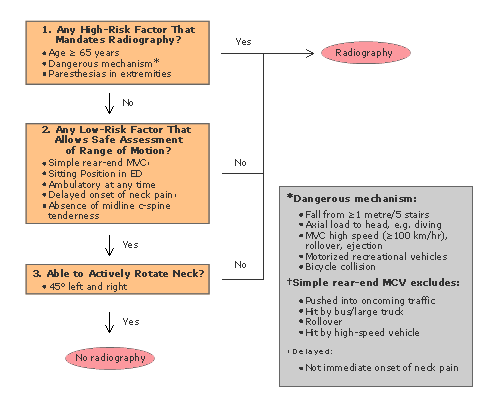Spinal Immobilization
The spine should be immobilized:
- Fit an appropriately sized semi‑rigid collar unless contraindicated
by:
- A compromised airway
- Known spinal deformities, such as ankylosing spondylitis (in these cases keep the spine in the person's current position)
- Reassess the airway after applying the collar
- Secure the head with head blocks and tape
The use of collars may be difficult (for example in people with short or wide necks, or people with a pre‑existing deformity) and could be counterproductive (for example increasing pain, worsening neurological signs and symptoms). In uncooperative, agitated or distressed people, including children, let them find a position where they are comfortable with manual in‑line spinal immobilisation.
The cervical spine may be cleared in alert stable trauma patients using the Canadian C-Spine Rule (Fig 1).
Plain X-rays alone are inadequate to rule out spinal injury. CT or MRI are preferred. If these are not available a careful risk/benefit assessment of continued spinal immobilization by senior clinicians is needed.
